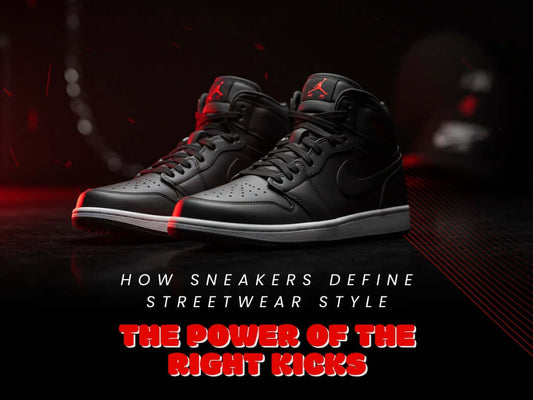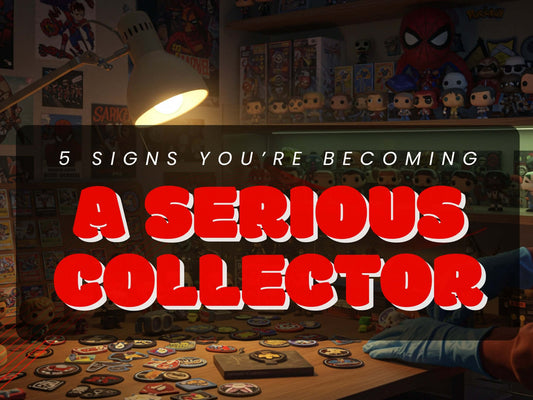
Have you ever wondered, “How much could this be worth?” while holding a shiny trading card? Trading cards have evolved from childhood pastimes into serious collectibles—sometimes even surpassing the value of luxury goods. Examples include old baseball cards and contemporary Pokémon rares. Knowing what makes a trading card valuable is essential to building (and safeguarding) a collection that genuinely stands out, regardless of your level of experience.
Trading cards have garnered media attention in recent years—one card sold for six figures, while another broke auction records. But what exactly makes one card worth hundreds of dollars while another, seemingly identical, isn’t worth the paper it’s printed on?
Realizing the value of a trading card can be thrilling and inspiring, whether you're revisiting your old collection or just getting started. From physical condition and grading scales to rarity, demand, and authenticity—there’s more to it than meets the eye.
In this blog, we’ll dive into the world of card grading, unpack what drives a card’s worth, and explain why a tiny scratch can change everything. Ready to discover the secrets behind your cards’ value? Let’s get started!
What is Card Grading?

So, what’s this “grading” thing all about? It’s like a professional check-up for your trading card, done by experts at companies like PSA, Beckett, or SGC. They inspect your card and give it a score from 1 (pretty rough) to 10 (absolutely flawless).
Why does this matter? Grading gives collectors a clear, universal way to judge a card’s condition. A high-grade card can be worth far more than the same card with a few flaws. Some rare cards in pristine shape? They’re like treasures, selling for mind-blowing prices at auctions. Grading isn’t just a number—it’s your card’s golden ticket.
Key Factors That Influence Card Value

What turns a card into a collector’s dream? Let’s break down the big factors that determine a trading card’s value.
1: Condition: The Core of Value

A card’s condition is make-or-break. Grading pros look at a few key things:
Centering: Is the image perfectly aligned? If it’s off-kilter, the value drops.
Corners: Crisp, sharp corners are a must. Bent or worn ones hurt the score.
Edges: Smooth edges show a card’s been cared for. Rough or damaged ones? Not great.
Surface: Scratches or scuffs are a no-go, especially on shiny holographic cards.
Creases: A crease is like a punch to the gut—value tanks fast.
Cards hitting that “Gem Mint” 10 are super rare and can fetch wild prices. Condition is your card’s first impression—and it needs to impress.
2: Rarity and Demand

Some cards are just harder to find—like limited editions or special prints. That rarity makes them hot commodities. But it’s not just about being rare—demand is huge. A rookie card of a sports legend or a fan-favorite Pokémon can skyrocket because collectors are clamoring for it. It’s the combo of “super scarce” and “everyone wants it” that drives prices up.
3: The Power of Players or Characters

Who’s on the card? That’s a big deal. Cards of icons like Michael Jordan or rare characters like a first-edition Charizard carry serious weight. Why? Fans love them, and nostalgia hits hard. In games like Magic: The Gathering, a card’s in-game power can also boost its appeal. The star on the card often decides its fate.
4: Authenticity: Keeping It Real

Fakes are a problem in the card world, so grading pulls double duty. It checks the condition and confirms your card is legit. A card sealed in a PSA, BGS, or SGC case comes with a trust badge, making it worth more than an ungraded card or one with questionable authenticity. Authenticity is like your card’s ID—non-negotiable.
How Does the Grading Process Work?
Thinking of grading a card? Here’s the deal: You send your card to a grading company, where pros examine it like detectives. They check centering, corners, edges, surface—every little detail. Then, they assign a grade from 1 (yikes) to 10 (perfection).
Some services, like Beckett, include sub-grades for things like edges or corners, giving you extra insight. Once graded, your card gets locked in a protective case with the grade displayed. It’s like giving your card a suit of armor—keeping it safe and market-ready.
Common Grading Scales and Companies

A few big names rule the grading world, each with its own approach but the same mission: clarity for collectors.
-
PSA (Professional Sports Authenticator): A fan favorite, using a 1-to-10 scale with sleek, trusted cases.
-
BGS (Beckett Grading Services): Also 1-to-10, with sub-grades for precision lovers.
-
SGC (Sportscard Guaranty): Another great option, with a 1-to-10 scale and bold black-bordered cases.
Each has its own flair, but they all make buying and selling cards easier. Choose what works for you, and you’re set.
Why Does Card Grading Matter?

Grading isn’t just for show—it’s about protecting your cards and their value. A graded card, sealed tight, won’t get damaged over time. Plus, it comes with an expert’s unbiased opinion, so buyers and sellers feel confident.
If you’re selling or building a collection that holds its value, grading is a must. For serious collectors, a slabbed PSA 10 is often the only way to go. Grading turns your cards into more than memories—they’re investments with staying power.
Conclusion
Whether you’re chasing rare Yu-Gi-Oh! cards or vintage sports gems, grading is your guide to understanding value. Condition, rarity, and authenticity all shape what your collection’s worth. So, dust off those cards, check their grades, and maybe get that old binder appraised. You could be holding a hidden treasure just waiting to shine!
Ready to take your collection to the next level? Visit Alcostashop.com to explore top-tier trading cards and start building your dream collection today!








